Infertility FAQs
 A: Men and women are equally likely to have a fertility issue. In about one in five infertile couples, both partners have contributing problems. In about 15% of couples, no cause is found after all tests have been done. This condition is also known as unexplained infertility.
A: Men and women are equally likely to have a fertility issue. In about one in five infertile couples, both partners have contributing problems. In about 15% of couples, no cause is found after all tests have been done. This condition is also known as unexplained infertility.
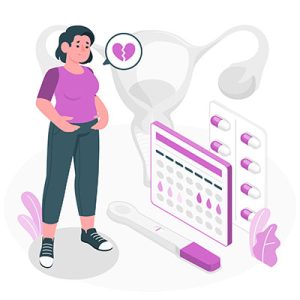 A: Age, weight, and anovulation. Rarely, in the uterus, fibroid growths, endometriosis, tumours, cervical problems, or irregular uterine shape can prevent the egg from being implanted in the uterus. In women, fertility declines with age, and even more so after the age of 35. Conception after the age of 45 is very rare. Being overweight or underweight can also play a role in having trouble conceiving. Anovulation refers to a woman who is not ovulating and therefore cannot conceive.
A: Age, weight, and anovulation. Rarely, in the uterus, fibroid growths, endometriosis, tumours, cervical problems, or irregular uterine shape can prevent the egg from being implanted in the uterus. In women, fertility declines with age, and even more so after the age of 35. Conception after the age of 45 is very rare. Being overweight or underweight can also play a role in having trouble conceiving. Anovulation refers to a woman who is not ovulating and therefore cannot conceive.
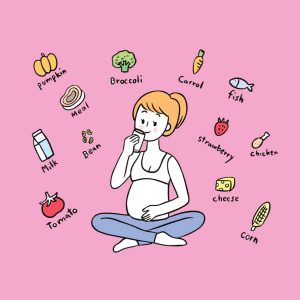 A: Folic acid. Women trying to conceive should add a supplement of at least 600 mcg of folic acid, either alone or as part of their prenatal vitamins to decrease the risk of foetal malformations. Folic acid may also decrease the risk of a miscarriage. The folic acid supplement should be started at least one to two months prior to conception to maximize its efficacy.
A: Folic acid. Women trying to conceive should add a supplement of at least 600 mcg of folic acid, either alone or as part of their prenatal vitamins to decrease the risk of foetal malformations. Folic acid may also decrease the risk of a miscarriage. The folic acid supplement should be started at least one to two months prior to conception to maximize its efficacy.
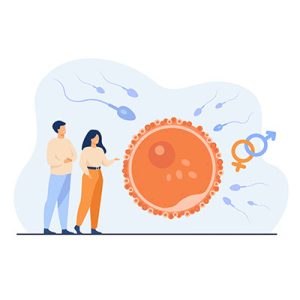 A: A woman is most fertile around one to two days before ovulation, ovulation occurs on different days for different women. It can vary month to month for many women, and some women can have longer or shorter cycles. Ovulation typically happens for most women in the range of 11 to 21 days into a menstrual cycle.
A: A woman is most fertile around one to two days before ovulation, ovulation occurs on different days for different women. It can vary month to month for many women, and some women can have longer or shorter cycles. Ovulation typically happens for most women in the range of 11 to 21 days into a menstrual cycle.
 A: There’s no reason to wait & try to get pregnant after discontinuing birth control pills. Most women start ovulating again about two weeks after taking the last dose of the birth control pill.
A: There’s no reason to wait & try to get pregnant after discontinuing birth control pills. Most women start ovulating again about two weeks after taking the last dose of the birth control pill.
 A: Men who are 40 years of age or older often have decreased fertility. However, in men, the most common reasons for infertility are sperm disorders. These problems include Low sperm count, Low sperm motility, malformation of the sperm, and/or blocked sperm ducts.
A: Men who are 40 years of age or older often have decreased fertility. However, in men, the most common reasons for infertility are sperm disorders. These problems include Low sperm count, Low sperm motility, malformation of the sperm, and/or blocked sperm ducts.
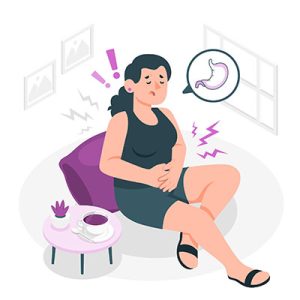 A: Pelvic inflammatory disease. Pelvic inflammatory disease or PID, is an infection of the female reproductive organs. PID is one of the most serious complications of certain sexually transmitted diseases in women. PID can cause irreversible damage to the uterus, ovaries, Fallopian tubes, or other parts of the female reproductive system, and is the primary preventable cause of infertility in women.
A: Pelvic inflammatory disease. Pelvic inflammatory disease or PID, is an infection of the female reproductive organs. PID is one of the most serious complications of certain sexually transmitted diseases in women. PID can cause irreversible damage to the uterus, ovaries, Fallopian tubes, or other parts of the female reproductive system, and is the primary preventable cause of infertility in women.
 A: Could not conceive after 12 months of unprotected sex. Infertility is defined as the inability to conceive after 12 months of regular & unprotected intercourse. For many couples, infertility is a crisis due to social norms, but infertility doesn’t mean you can never have a child. Fertility problems often come with feelings of guilt or inadequacy in couples. Up to 15% of all couples are infertile, but only 1% to 2% are sterile. Half of the couples who seek help can eventually conceive and give birth to a healthy baby with the help of assisted reproductive techniques.
A: Could not conceive after 12 months of unprotected sex. Infertility is defined as the inability to conceive after 12 months of regular & unprotected intercourse. For many couples, infertility is a crisis due to social norms, but infertility doesn’t mean you can never have a child. Fertility problems often come with feelings of guilt or inadequacy in couples. Up to 15% of all couples are infertile, but only 1% to 2% are sterile. Half of the couples who seek help can eventually conceive and give birth to a healthy baby with the help of assisted reproductive techniques.
 A: If the woman is 35 or older, an infertility diagnosis is considered after only six months of regular unprotected intercourse. A woman’s chances of conceiving rapidly decrease every year after the age of 30. As a woman ages, she has fewer healthy eggs remaining in ovarian reserves.
A: If the woman is 35 or older, an infertility diagnosis is considered after only six months of regular unprotected intercourse. A woman’s chances of conceiving rapidly decrease every year after the age of 30. As a woman ages, she has fewer healthy eggs remaining in ovarian reserves.
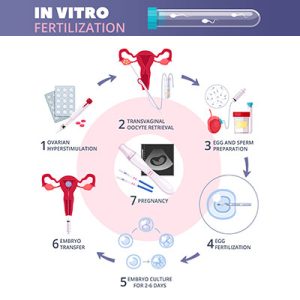 A: IVF involves combining eggs and sperm outside the body in a laboratory. Once an embryo or embryos form, they are then placed in the uterus. IVF is a complex process and needs equal contribution from the patient & treating doctor.
A: IVF involves combining eggs and sperm outside the body in a laboratory. Once an embryo or embryos form, they are then placed in the uterus. IVF is a complex process and needs equal contribution from the patient & treating doctor.
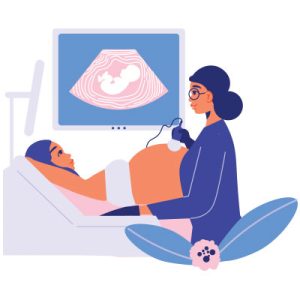 It is helpful for both partners to come for the first visit. In some cases, we can determine the cause of the fertility at the initial visit simply by reviewing the couple’s medical history and some initial testing & in other cases, several visits may be required.
It is helpful for both partners to come for the first visit. In some cases, we can determine the cause of the fertility at the initial visit simply by reviewing the couple’s medical history and some initial testing & in other cases, several visits may be required.
During the first visit, the physician will review both partners’ medical histories and occasionally perform some physical examination. Basic tests are ordered that will take place over the ensuing month. These tests normally include a semen analysis to look at the number, motion & shape of sperm, blood hormone tests for the female, which are usually done on the third day of the cycle, pelvic ultrasound, and a hysterosalpingogram, which is an X-ray to evaluate uterine anatomy and determine if the fallopian tubes are unblocked. More testing may be required for even more complex cases.
 A: Depending upon the age and individual needs of a couple, we begin with the simplest & cost-efficient treatment methods. In designing a treatment plan, we are very conscious of and attentive to the sense of urgency a couple might feel. We consider various factors such as the length of time the couple has been trying to achieve pregnancy, their response to the previous treatments, the overall health of both the partners and their test results.
A: Depending upon the age and individual needs of a couple, we begin with the simplest & cost-efficient treatment methods. In designing a treatment plan, we are very conscious of and attentive to the sense of urgency a couple might feel. We consider various factors such as the length of time the couple has been trying to achieve pregnancy, their response to the previous treatments, the overall health of both the partners and their test results.
Treatment choices include educational interactions such as the timing of intercourse during a woman’s cycle; medical treatments such as ovulation induction in the woman; the repair of damaged sperm ducts or tubes; artificial insemination; or assisted reproduction technologies such as in vitro fertilization (IVF).
 A: It is critical for couples to have realistic expectations about treatment. Overall, most couples who are willing to persist and make necessary lifestyle adjustments will ultimately succeed. The outcome of treatment depends on the age of the partners and the causes of their infertility. National standards show that most current treatments are successful.
A: It is critical for couples to have realistic expectations about treatment. Overall, most couples who are willing to persist and make necessary lifestyle adjustments will ultimately succeed. The outcome of treatment depends on the age of the partners and the causes of their infertility. National standards show that most current treatments are successful.
Pregnancy FAQs
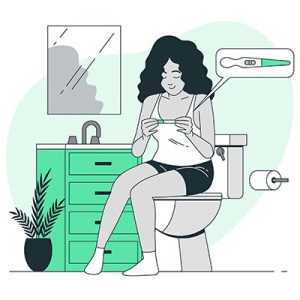 The easy and most reliable sign of pregnancy is a missed period. If you have a regular monthly cycle, normally you get your period about 4 weeks from the start of your last period & if not then you should do a pregnancy test.
The easy and most reliable sign of pregnancy is a missed period. If you have a regular monthly cycle, normally you get your period about 4 weeks from the start of your last period & if not then you should do a pregnancy test.
Take a home pregnancy test
To find out if you’re pregnant, you can do a pregnancy test from the first day you miss your period. Home pregnancy tests are very reliable, but you should see your GP to get the surety and also to start your antenatal care.
Early signs and symptoms
Most women still feel fine at 4 weeks, but others may notice sore breasts, fatigue, frequent urination, and nausea.
Sometimes pregnant women have some very light bleeding at the time when their period would be due. This spotting is also known as implantation bleeding, which is when the foetus plants itself into the wall of your womb. Spotting is completely normal and one shouldn’t worry about any medical treatment.
You may be sick or feel sick – this is commonly known as morning sickness, but it can happen at any time of day. If you feel nauseous and can’t keep anything down, contact your treating doctor. You may also notice changes in your breasts. They may become larger and feel tender like they might do before your period. The veins may show up more and the nipples may darken and stand out.
Every woman is different and not all women will notice all these symptoms. If you’re eagerly looking out for any hints that you might be pregnant, other early signs of pregnancy include :
- Needing to pee more often – you may find you have to get up in the night
- Being constipated
- Increased vaginal discharge without any soreness or irritation
- Feeling tired
- Having a strange taste in your mouth.
 There is no specific time when pregnancy food cravings start. It’s different for every woman – and there are chances you may not necessarily have any cravings.
There is no specific time when pregnancy food cravings start. It’s different for every woman – and there are chances you may not necessarily have any cravings.
If you do start having cravings, it’ll probably be in your first trimester. They’ll get stronger in your second trimester, and then eventually stop in your third trimester.
Cravings come in all shapes and sizes. Some women crave fatty foods like chips. Others get pregnancy cravings for things they didn’t like before they got pregnant, or strange combinations of food such as mars bars with bacon.
Try to eat as healthily as possible – keep those unhealthy temptations to a minimum!
If you find yourself craving things that aren’t food, like toothpaste, coal or even soil, speak to your treating doctor, as this may be a sign of a vitamin deficiency.
 Weight gain in pregnancy varies from person to person. It also depends on your weight before you become pregnant.
Weight gain in pregnancy varies from person to person. It also depends on your weight before you become pregnant.
Most pregnant women gain between 10kg and 12.5kg, putting on most of the weight after week 20. Much of the excess weight is due to your baby growing & also your body will be storing fat to make breast milk after your baby is born.
Putting on too much or too little weight while in pregnancy can lead to health problems for the mother & the unborn baby.
 You’ll get most of the vitamins and minerals you need by eating a healthy & varied diet. But when you’re pregnant and also while you are trying to get pregnant, you also need to take a folic acid supplement.
You’ll get most of the vitamins and minerals you need by eating a healthy & varied diet. But when you’re pregnant and also while you are trying to get pregnant, you also need to take a folic acid supplement.
To keep bones and muscles healthy, we need vitamin D & Just 10 micrograms a day is all you need – it’s the same for kids and grown-ups.
Along with the vitamins you should take, there are also some to watch out for and avoid. You should avoid supplements and multivitamins containing vitamin A also known as retinol, as too much Vitamin A can harm your baby’s development. You should also avoid liver and liver products like fish liver oil, as they are high in vitamin A.
 Keeping an active lifestyle and doing exercise while you’re pregnant is great for pregnancy. You can keep up your normal level of daily activity and exercise regime, as long as it feels comfortable.
Keeping an active lifestyle and doing exercise while you’re pregnant is great for pregnancy. You can keep up your normal level of daily activity and exercise regime, as long as it feels comfortable.
Tips for exercising
- Always warm up and cool down to keep you from pulling any muscles.
- Stay hydrated – drink lots of water.
- Other good activities to try while pregnant include walking, yoga, pilates, aerobics and pelvic floor exercises.
Some exercises, like running and weight training, will need to be modified as your belly grows.
- The best combination of exercise is aerobic and muscle-strengthening, as this helps you breathe properly and allows you to deal with the increased weight you’ll be carrying around.
- If you’re not already active, try building it into your daily life by taking the stairs, doing housework, or gardening.
What to avoid during pregnancy?
- Try not to lie on your back for long periods, as your bump will press on a big blood vessel that brings blood back to your heart, which can make you feel faint.
- Avoid anything that risks you falling, for example, horse riding, skiing, and gymnastics.
 Depending on how you normally like to snooze, you might have to rethink your favourite position while you’re pregnant.
Depending on how you normally like to snooze, you might have to rethink your favourite position while you’re pregnant.
If you sleep on your back, it’s safe to continue during the first trimester, but as your bump gets bigger and heavier, you’ll need to sleep on your side, so it’s best to get into the habit as soon as you can.
By the third trimester, sleeping on your side is the safest position for your baby as it helps prevent the risk of stillbirth. Don’t worry, if your pregnancy is uncomplicated your risk of stillbirth is low, and going to sleep on your side will make it even lower.
It’s ok if you end up in all sorts of positions when you are asleep. The important thing to remember is to fall asleep on your side, as this means you are sleeping safely for your baby. If you wake up on your back, don’t panic, just turn onto your side and go back to sleep.
Try sleeping on one side with your knees bent, it’ll help reduce the amount of pressure on your uterus and help you breathe better. Plus, this position can help relieve backache. You can use pillows under your belly, between your legs, and behind your back, if you like.
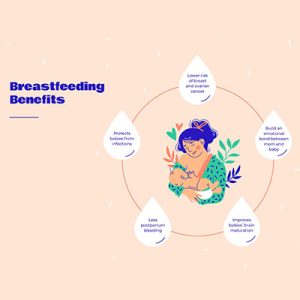 It’s a good idea to read as much as you can about breastfeeding before the birth. This will help you feel more confident and prepared. Read about breastfeeding positions, how to express your breast milk, and practical tips on dealing with common breastfeeding issues.
It’s a good idea to read as much as you can about breastfeeding before the birth. This will help you feel more confident and prepared. Read about breastfeeding positions, how to express your breast milk, and practical tips on dealing with common breastfeeding issues.
 A birth plan is a way of letting your doctors know what you want to happen during your labour. It’s a chance to plan things like where you want to give birth, who’s going to be with you during the birth, and what facilities you’d like to use.
A birth plan is a way of letting your doctors know what you want to happen during your labour. It’s a chance to plan things like where you want to give birth, who’s going to be with you during the birth, and what facilities you’d like to use.
It’s important to remember that giving birth doesn’t always go perfectly as per your plan and things may change at the last minute, all you need to be concerned about is the safe delivery.

